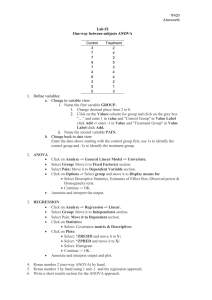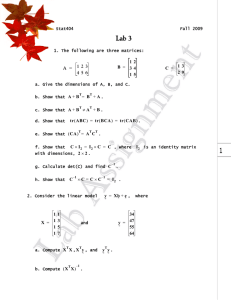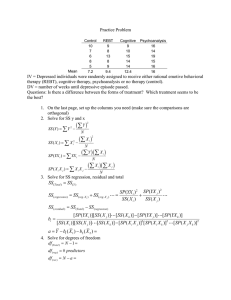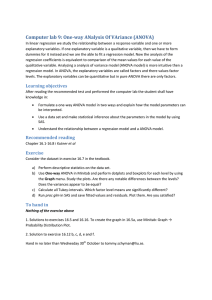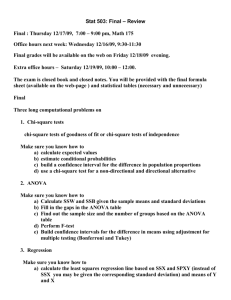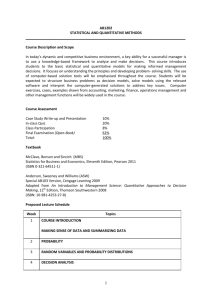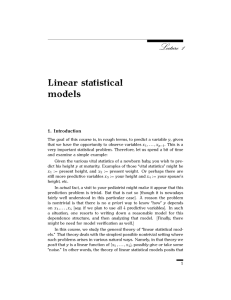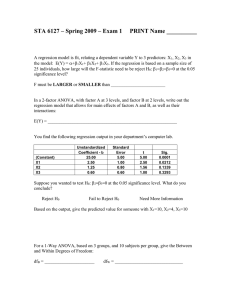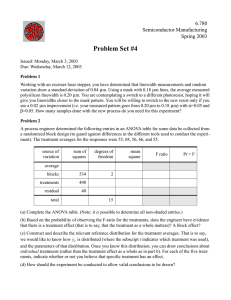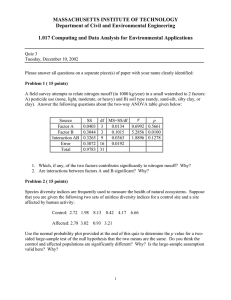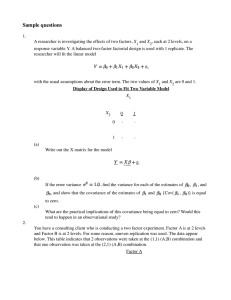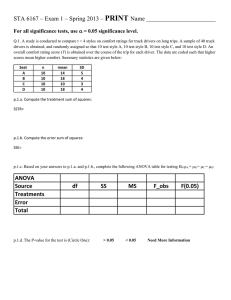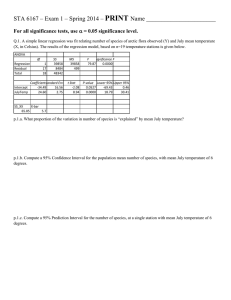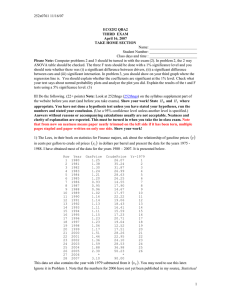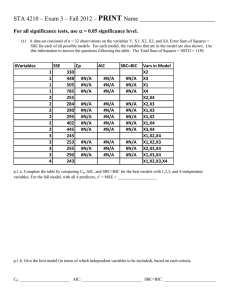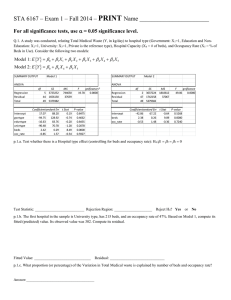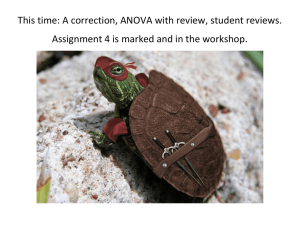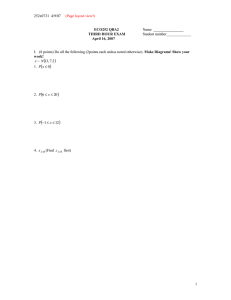Applied Statistics Midterm 2 Material 1. Two Factor ANOVA
advertisement
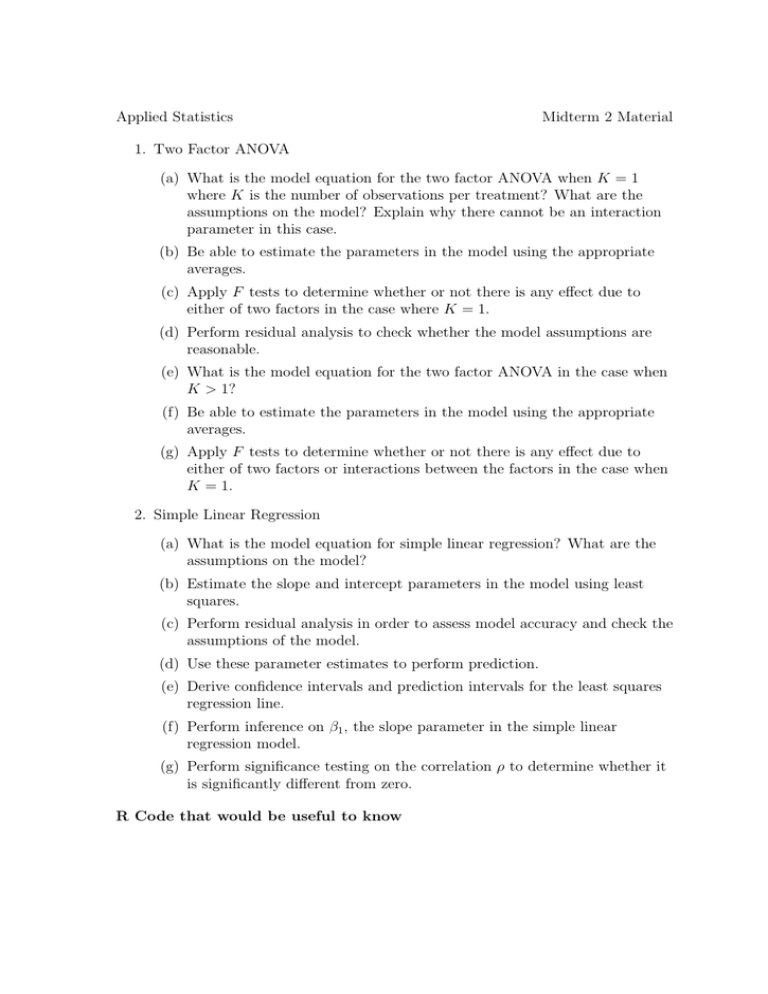
Applied Statistics Midterm 2 Material 1. Two Factor ANOVA (a) What is the model equation for the two factor ANOVA when K = 1 where K is the number of observations per treatment? What are the assumptions on the model? Explain why there cannot be an interaction parameter in this case. (b) Be able to estimate the parameters in the model using the appropriate averages. (c) Apply F tests to determine whether or not there is any effect due to either of two factors in the case where K = 1. (d) Perform residual analysis to check whether the model assumptions are reasonable. (e) What is the model equation for the two factor ANOVA in the case when K > 1? (f) Be able to estimate the parameters in the model using the appropriate averages. (g) Apply F tests to determine whether or not there is any effect due to either of two factors or interactions between the factors in the case when K = 1. 2. Simple Linear Regression (a) What is the model equation for simple linear regression? What are the assumptions on the model? (b) Estimate the slope and intercept parameters in the model using least squares. (c) Perform residual analysis in order to assess model accuracy and check the assumptions of the model. (d) Use these parameter estimates to perform prediction. (e) Derive confidence intervals and prediction intervals for the least squares regression line. (f) Perform inference on β1 , the slope parameter in the simple linear regression model. (g) Perform significance testing on the correlation ρ to determine whether it is significantly different from zero. R Code that would be useful to know 1. Application of the two factor analysis of variance 2. Estimating the parameters in the two factor ANOVA model and computing the fitted values and residuals. 3. QQ plots/ Shapiro–Wilks Test (for residual analysis). 4. Least Squares estimation of the model parameters in a simple linear model ( lm command). 5. Calculating confidence intervals and performing inference for β1 6. Imputing data from tables so that these procedures can be applied.

